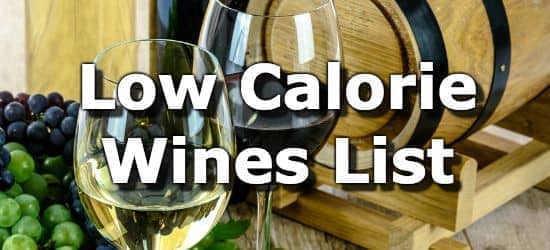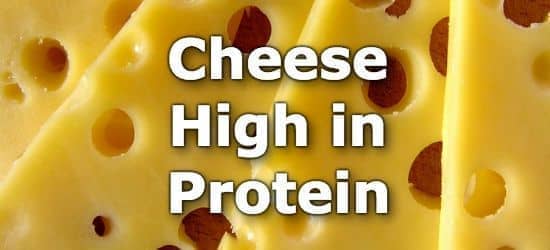Wines With The Fewest Calories - A List from Lowest to Highest

For those trying to manage their weight, knowing the calorie content of different wines is useful. Alcohol consumption is linked to an increased risk of obesity. (1)
The number of calories a wine contains depends on the alcohol and sugar content. Generally, the higher the alcohol, the higher the calories. This is because alcohol provides 7 calories per gram (1), compared to carbs and protein, which only provide 4 calories per gram. (2) If a wine is low in alcohol but high in calories, then it is likely to be a sweet wine, high in sugar.
A 5oz glass of wine typically contains between 109-130 calories. A simple trick to find approximately how many calories 5oz of wine contains is to take the percent alcohol and multiply it by 12. Thus, a wine that is 10% alcohol by volume (ABV) will contain about 120 calories per 5oz (150ml) glass.
Below is a ranking of wines from lowest to highest. Non-alcoholic wine is easily the lowest in calories, providing just 9 calories in a glass. A light wine at 6.5% ABV provides 73 calories per glass. After that, most wines provide 109-120 calories in a 5oz glass or 220-240 calories in a 10oz serving. Sweet dessert wines tend to have a higher alcohol and sugar content and can pack as many as 236 calories in a single 5oz glass. That is 12% of the total calories you should consume in one day!
A Ranking of Wines by Calories From Lowest to Highest
| Wine | Calories Per 5oz Glass | Percent Alcohol (%ABV) |
|---|---|---|
| #1 Non-Alcoholic Wine + | 9 calories (0% DV) |
0% |
| #2 Light (Low-Alcohol) Wine + | 73 calories (4% DV) |
6% |
| #3 Carignane + | 109 calories (5% DV) |
9% |
| #4 Muller Thurgau (White) + | 112 calories (6% DV) |
9% |
| #5 Gamay + | 115 calories (6% DV) |
10% |
| #6 Lemberger (Red) + | 118 calories (6% DV) |
10% |
| #7 Chenin Blanc (Wine) + | 118 calories (6% DV) |
10% |
| #8 Riesling (White) + | 118 calories (6% DV) |
10% |
| #9 Gewurztraminer (White) + | 119 calories (6% DV) |
10% |
| #10 Pinot Blanc (White) + | 119 calories (6% DV) |
11% |
| #11 Sauvignon (White) + | 119 calories (6% DV) |
11% |
| #12 Fume Blanc (White) + | 121 calories (6% DV) |
11% |
| #13 Pinot Noir (Red) + | 121 calories (6% DV) |
10% |
| #14 Semillon (White) + | 121 calories (6% DV) |
10% |
| #15 Cabernet Franc (Red) + | 122 calories (6% DV) |
11% |
| #16 Cabernet Sauvignon (Red) + | 122 calories (6% DV) |
11% |
| #17 Claret (Red) + | 122 calories (6% DV) |
10% |
| #18 Merlot (Red) + | 122 calories (6% DV) |
11% |
| #19 Pinot Gris (Grigio) (White) + | 122 calories (6% DV) |
11% |
| #20 Syrah (Red) + | 122 calories (6% DV) |
11% |
| #21 Average Table Wine + | 123 calories (6% DV) |
10% |
| #22 Muscat (White) + | 123 calories (6% DV) |
9% |
| #23 Chardonnay (White) + | 123 calories (6% DV) |
11% |
| #24 Barbera (Red) + | 125 calories (6% DV) |
11% |
| #25 Petite Sirah (Red) + | 125 calories (6% DV) |
11% |
| #26 Rose + | 126 calories (6% DV) |
10% |
| #27 Sangiovese (Red) + | 126 calories (6% DV) |
11% |
| #28 Burgundy (Red) + | 127 calories (6% DV) |
10% |
| #29 Mouvedre (Red) + | 129 calories (6% DV) |
11% |
| #30 Zinfandel (Red) + | 129 calories (6% DV) |
11% |
| #31 Dry Dessert Wine + | 224 calories (11% DV) |
15% |
| #32 Sweet Dessert Wine + | 236 calories (12% DV) |
15% |
From the Nutrient Ranking Tool
Use the ranking tool links below to select foods and create your own food list to share or print.
- Foods High in Calories
- Foods Low in Calories
- Vegetables High in Calories
- Fruits High in Calories
- Vegetarian Foods High in Calories
- Nuts High in Calories
- Grains High in Calories
- Beans High in Calories
- Dairy High in Calories
- Breakfast Cereals High in Calories
- Fast Foods High in Calories
View more nutrients with the nutrient ranking tool, or see ratios with the nutrient ratio tool.
Related
Data Sources and References
- Sayon-Orea C, Martinez-Gonzalez MA, Bes-Rastrollo M. Alcohol Consumption and Obesity: An Update Nutr Rev. 2011 Aug;69(8):419-31. doi: 10.1111/j.1753-4887.2011.00403.x. 21790610
- Bravata DM, Sanders L, Huang J, Krumholz HM, Olkin I, Gardner CD, Bravata DM. Low-Carbohydrate Diet JAMA. 2003 Apr 9;289(14):1837-50. doi: 10.1001/jama.289.14.1837. 12684364
Simplify Nutrition Tracking with MyFoodData!
Speedy Tools and Detailed Data FREEEasily analyze your meals to find the best foods for your goals.
✅ Use our recipe nutrition calculator and nutrition comparison tool.
✅ Access expert nutrition data tools and in-depth articles.
✅ Log foods and organize your recipes with a free account.

 Next ➞
Next ➞
